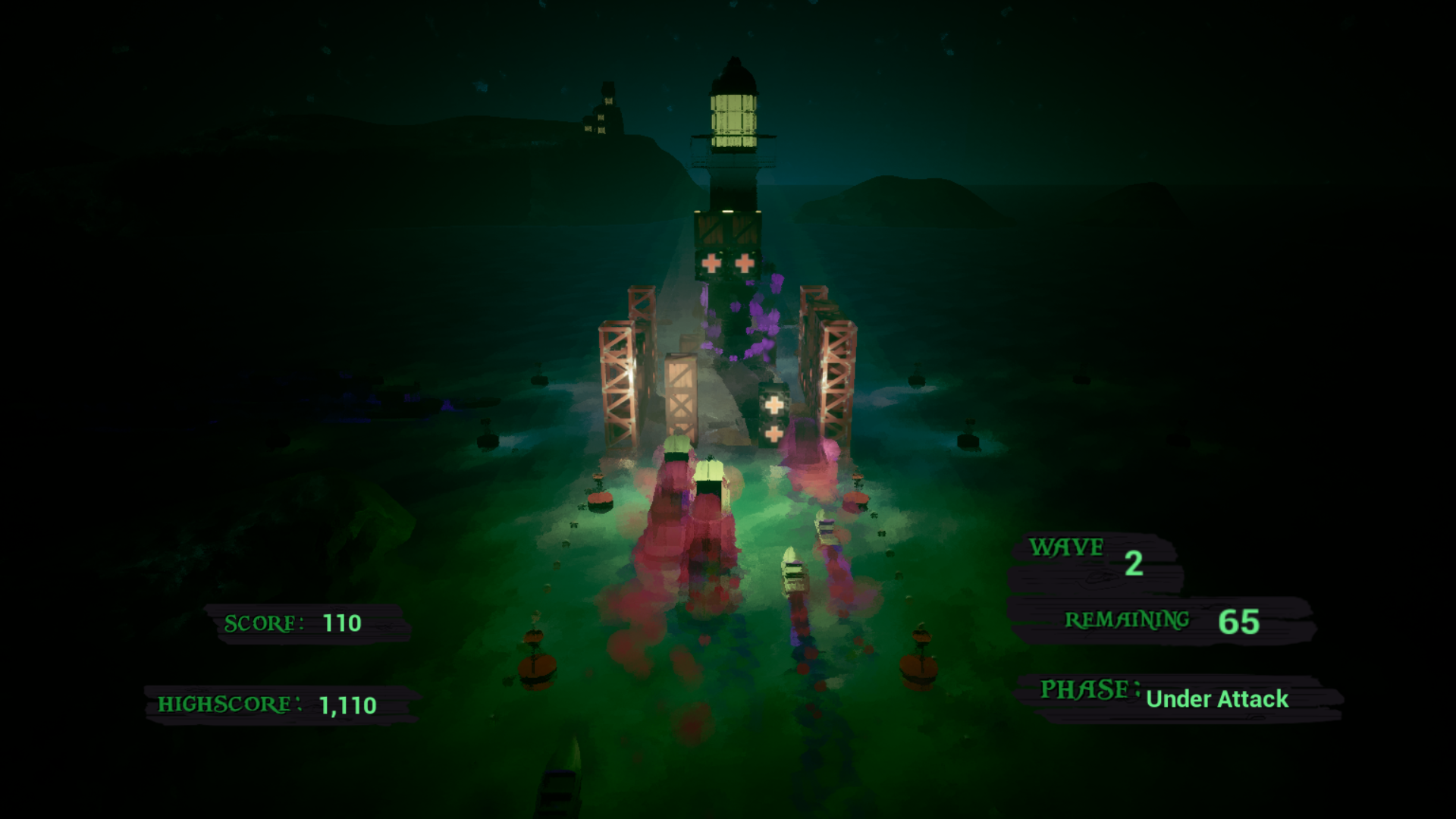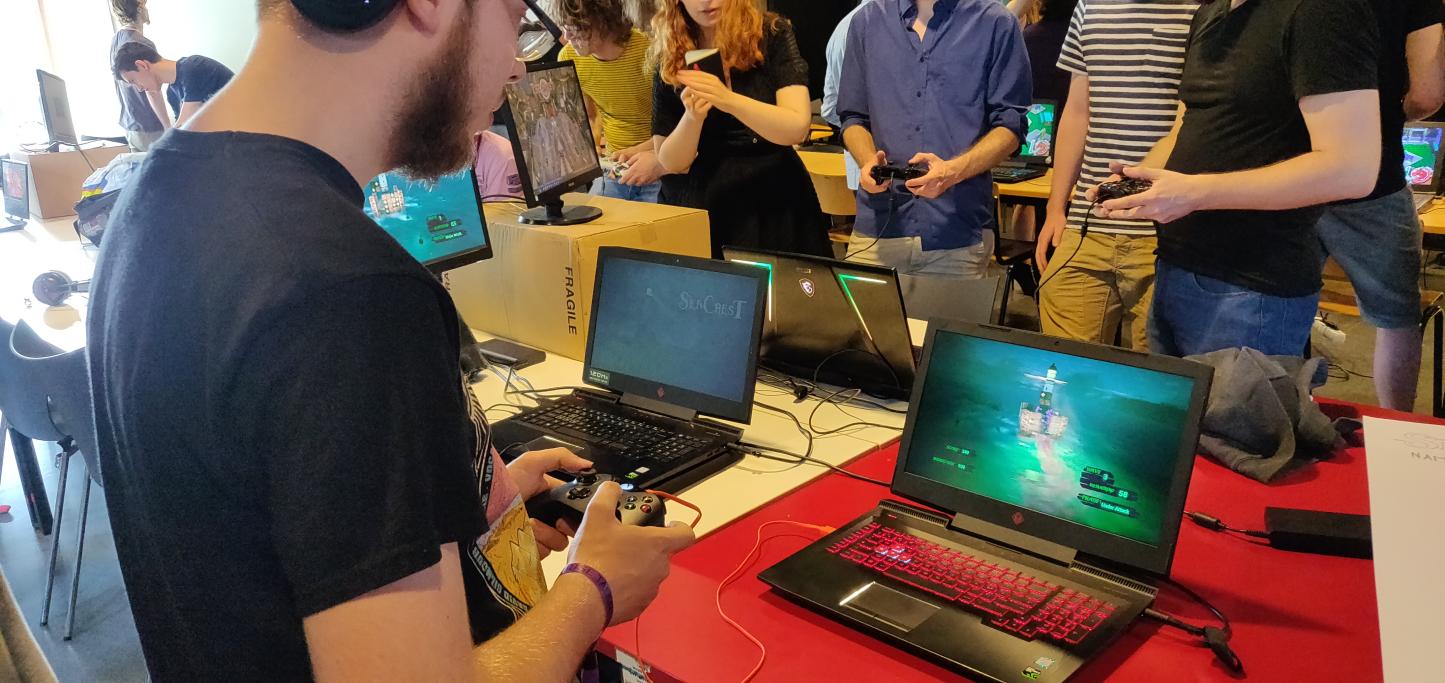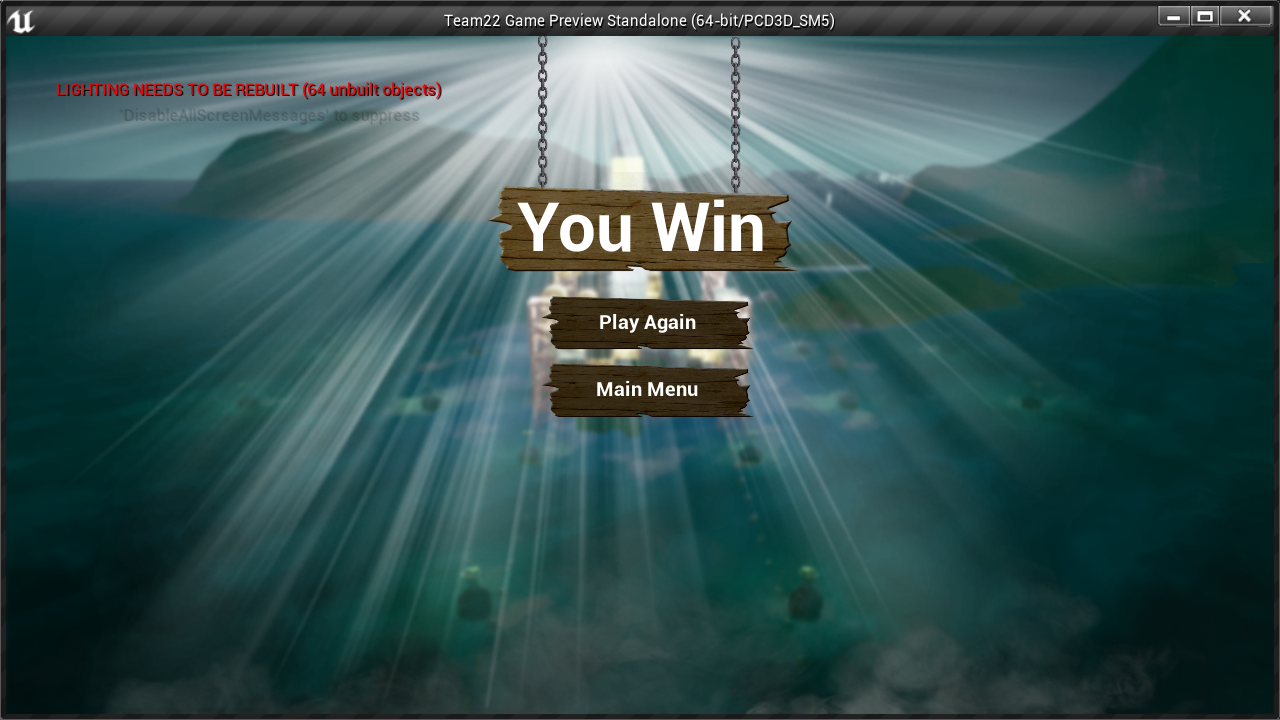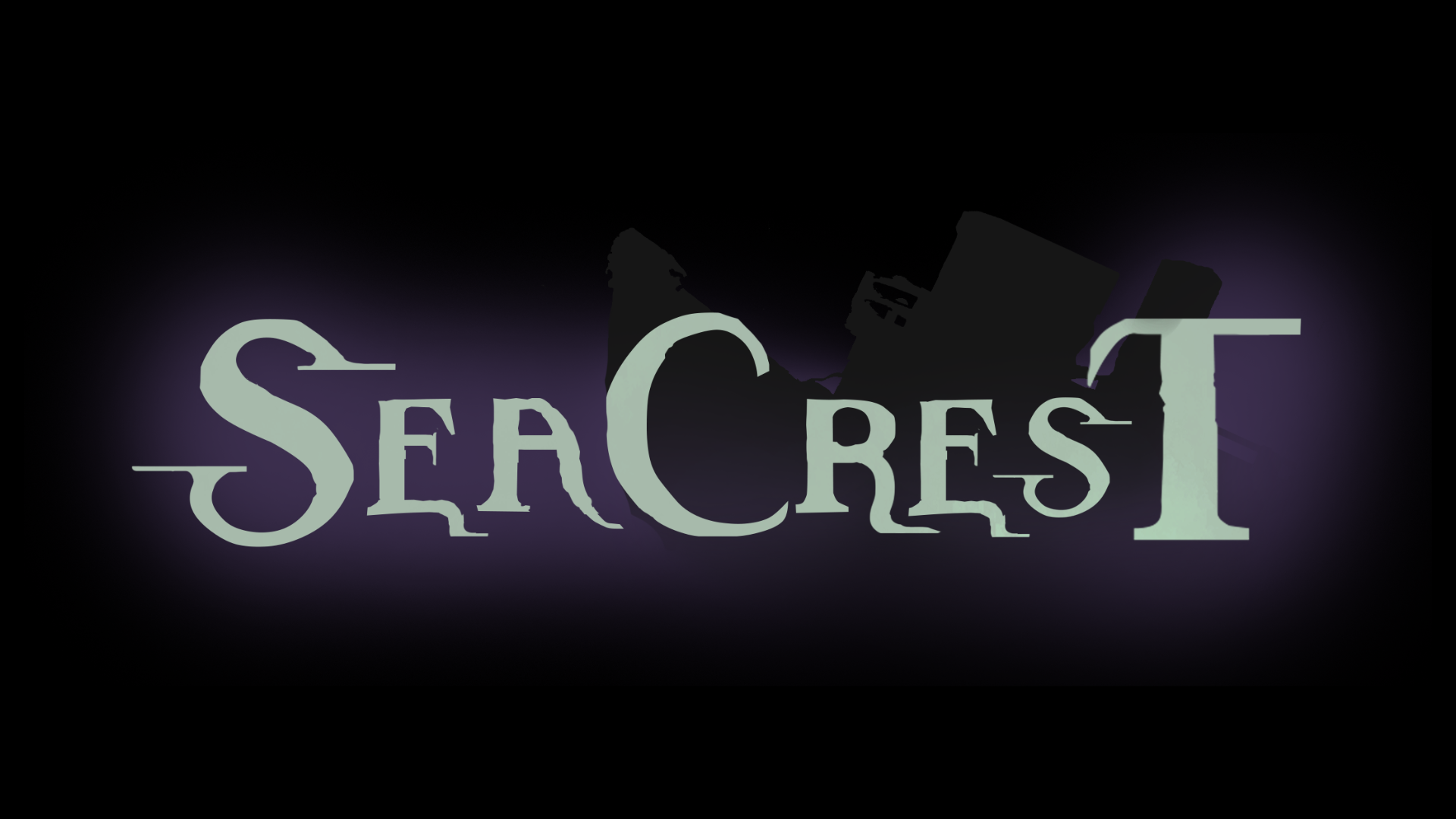SeaCrest
SeaCrest is a third person tower defense, where the player has to stack crates, earn points and protect the lighthouse from the ghost ships.
Project Information
Genre: Third Person Tower Defense
Engine: Unreal Engine 4
Duration: 8 weeks
Team Size: 9
Primary Role: Game Designer
Secondary Role: Level Designer
Utilized Tools:
G-Suite
Trello
Perforce
Unreal Engine 4
G-Suite
Trello
Perforce
Unreal Engine 4
Achievements
SeaCrest is the first project, that I’ve had the opportunity to work with other disciplines towards the same end product.
I was seen as the vision holder, through the full duration of this project. The team relied on me for answers about any product related questions.
This was also my first experience in creating and editing a trailer.
Responsibilities / Contributions
Conceptualize, Research & Iterate the Core Gameplay.
Keeping the Project Vision unified across the whole team.
Designing and Iterating 2 out of 4 Waves/Levels.
Testing and Balancing the Level Difficulty across all levels.
Creating a Game Trailer.
Concepting, Pre-Production & Research
We had to create a game concept within a week, based on a couple of art and programming restrictions. After a full week of brainstorming, researching and rapid prototyping, our team settled for a Tetris, Tower Defense concept.
I was responsible for the core gameplay through the development of SeaCrest. And started with the research into the core gameplay of Tower Defense and Tetris like games, questioning myself:
Concept Inspiration
~ What are the key features of this game?
~ How do these features function?
~ What type of gameplay do they create?
With justifiable reasoning, the answers to these questions would be utilized to determine the features for SeaCrest.
Concepting, Pre-Production & Research
Concept Inspiration
We had to create a game concept within a week, based on a couple of art and programming restrictions. After a full week of brainstorming, researching and rapid prototyping, our team settled for a Tetris, Tower Defense concept.
I was responsible for the core gameplay through the development of SeaCrest. And started with the research into the core gameplay of Tower Defense and Tetris like games, questioning myself:
~ What are the key features of this game?
~ How do these features function?
~ What type of gameplay do they create?
With justifiable reasoning, the answers to these questions would be utilized to determine the features for SeaCrest.
Wave 2
Part of Wave 4
Level Design, Testing & Balancing
Like other Tower Defense games, SeaCrest portrays a level per enemy wave. This wave system was constructed using smaller attack patterns that I collaborated on with two other designers. We defined the attack pattern sequence for the casual game mode, while the sequence of the attack patterns were randomized per difficulty for the infinite mode.
The wave sequences were created with one factor in mind, to create an increase in difficulty. Several factors can influence the difficulty level:
– Amount of attacked tower sides
– Amount of boats per second
– Boat attack formation
– Wave duration
Utilizing the tool our programmers provided, I set up wave 2 and 4. I defined and implemented their wave duration, the utilized enemy types within the waves along with their position and time of appearance, across the 4 lanes.
I also actively tested the flow of the game with external and internal playtesters, to balance the difficulty across all waves, based on the feedback.
Level Design, Testing & Balancing
Like other Tower Defense games, SeaCrest portrays a level per enemy wave. This wave system was constructed using smaller attack patterns that I collaborated on with two other designers. We defined the attack pattern sequence for the casual game mode, while the sequence of the attack patterns were randomized per difficulty for the infinite mode.
The wave sequences were created with one factor in mind, to create an increase in difficulty. Several factors can influence the difficulty level:
– Amount of attacked tower sides
– Amount of boats per second
– Boat attack formation
– Wave duration.
Utilizing the tool our programmers provided, I set up wave 2 and 4. I defined and implemented their wave duration, the utilized enemy types within the waves along with their position and time of appearance, across the 4 lanes.
I also actively tested the flow of the game with external and internal playtesters, to balance the difficulty across all waves, based on the feedback.
Personal Retrospective
Overall I’m proud of what we were able to deliver within 8 weeks. Working with other disciplines for the first time has provided me with new experiences and gave me a better understanding of the responsibilities per discipline. Based upon these new experiences and knowledge, I have a better overview of team compositions and project scopes, which can be taken into account while designing new features.
In the future, however, I would include an onboarding level as a Level Designer, since the players are currently thrown into the deep. We do have a controls list in the main menu, but most players either didn’t look at it or forgot the controls.




